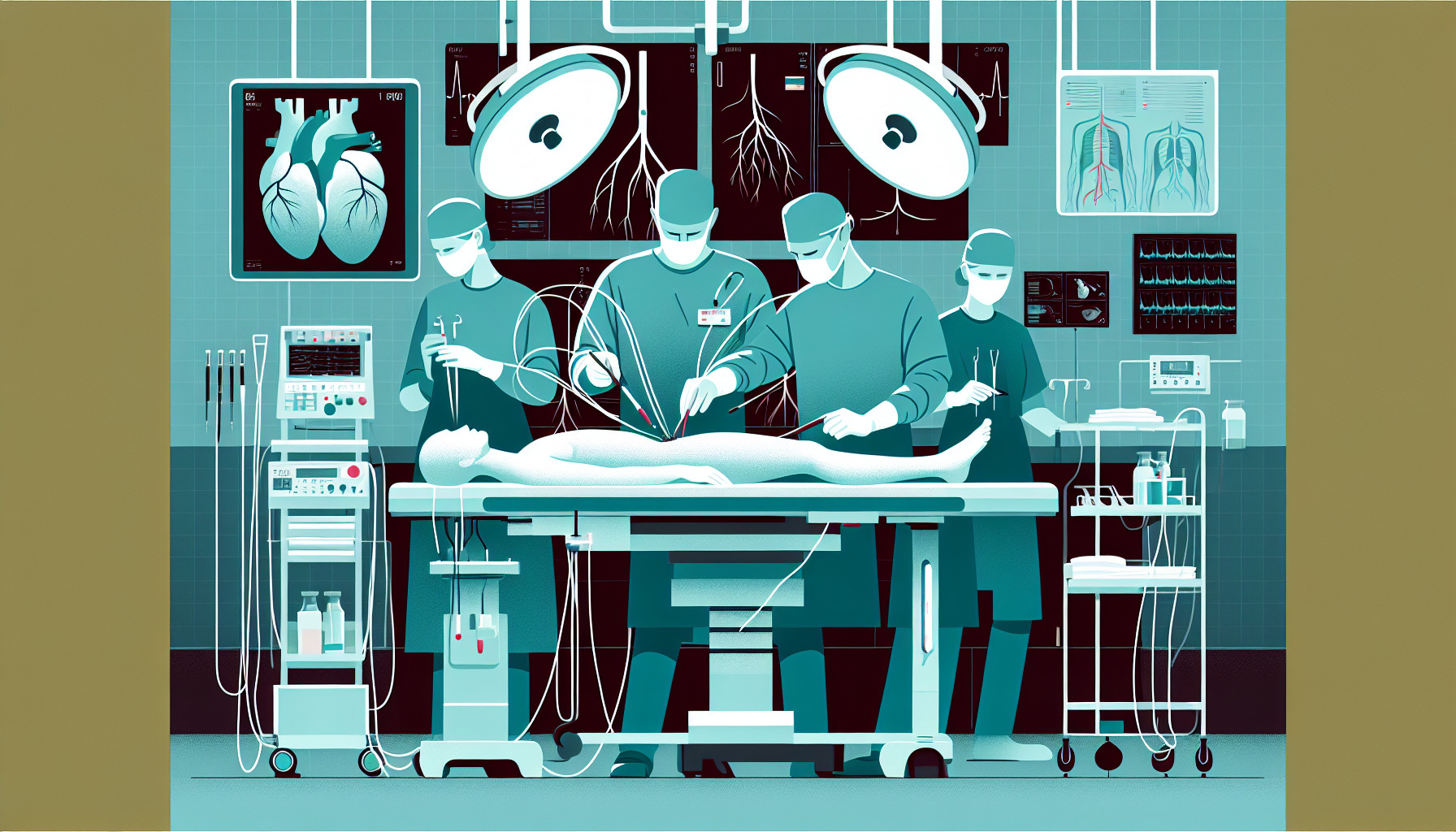Our Summary
This research paper discusses three different methods of creating vascular smooth muscle cells (VSMCs) from human induced pluripotent stem cells (hiPSCs). These cells are important in the creation of tissue-engineered vascular grafts (TEVGs), which are replacement blood vessels made in a lab. The goal is to use these grafts to treat cardiovascular diseases.
The first method discussed uses an “embryoid body” approach to mimic early embryonic development and create large amounts of VSMCs. The second method involves creating VSMCs from specific embryological origins, which could help in treating specific vascular diseases. The third method involves growing the cells in a layer on a matrix protein and using a pulsating flow to encourage the cells to mature and form organized elastic fibers.
In simple terms, scientists are finding new ways to create cells that can be used to build replacement blood vessels for patients with heart disease. These new methods could lead to personalized treatments and potentially help millions of people.
FAQs
- What are the three different methods discussed in the research for creating vascular smooth muscle cells from human induced pluripotent stem cells?
- How can these methods contribute to treating cardiovascular diseases?
- What is the potential impact of these new methods on heart disease patients?
Doctor’s Tip
One helpful tip a doctor might give a patient about vascular bypass surgery is to follow a healthy lifestyle that includes regular exercise, a balanced diet, and avoiding tobacco use. These habits can help improve blood flow and overall vascular health, which can support the success of the bypass surgery and reduce the risk of complications. Additionally, it is important for patients to closely follow their post-operative care instructions and attend all follow-up appointments to monitor their progress and ensure proper healing.
Suitable For
Patients who are typically recommended vascular bypass surgery are those who have severe blockages in their arteries that cannot be treated with medication or less invasive procedures such as angioplasty. These blockages can lead to symptoms such as chest pain, shortness of breath, and fatigue, and can increase the risk of heart attack or stroke.
Common conditions that may require vascular bypass surgery include:
- Coronary artery disease: This occurs when the arteries that supply blood to the heart become narrowed or blocked, leading to chest pain (angina) or a heart attack.
- Peripheral artery disease: This affects the arteries outside of the heart, usually in the legs, and can cause pain, numbness, and difficulty walking.
- Carotid artery disease: This affects the arteries in the neck that supply blood to the brain, and can increase the risk of stroke.
- Renal artery disease: This affects the arteries that supply blood to the kidneys, and can lead to high blood pressure and kidney damage.
Vascular bypass surgery involves creating a new pathway for blood flow by using a blood vessel from another part of the body or a synthetic graft to bypass the blocked or narrowed artery. This helps improve blood flow to the affected area and reduce symptoms.
Overall, patients who have severe arterial blockages and are at risk of serious complications are typically recommended vascular bypass surgery to improve blood flow and reduce the risk of complications.
Timeline
Before vascular bypass surgery:
- Patient experiences symptoms of poor blood flow, such as chest pain, leg pain, or difficulty breathing.
- Patient undergoes diagnostic tests, such as angiography or ultrasound, to determine the location and severity of the blockage in the blood vessels.
- Patient consults with a vascular surgeon to discuss treatment options, including medication, lifestyle changes, or surgical intervention.
- Patient undergoes pre-operative tests and evaluations to ensure they are healthy enough for surgery.
After vascular bypass surgery:
- Patient undergoes the surgical procedure to create a bypass around the blocked or narrowed blood vessel using a graft made from their own vein or a synthetic material.
- Patient is closely monitored in the hospital for any complications or signs of infection.
- Patient undergoes physical therapy and rehabilitation to regain strength and mobility after the surgery.
- Patient follows up with their vascular surgeon for regular check-ups and monitoring of the graft to ensure proper blood flow.
- Patient may need to make lifestyle changes, such as quitting smoking or improving diet and exercise habits, to prevent future blockages in the blood vessels.
What to Ask Your Doctor
Some questions a patient should ask their doctor about vascular bypass include:
- What is a vascular bypass and why is it necessary for my condition?
- What are the different types of vascular bypass procedures available and which one is most suitable for me?
- What are the potential risks and complications associated with a vascular bypass surgery?
- What is the success rate of vascular bypass surgeries for treating my specific condition?
- What is the recovery process like after a vascular bypass surgery and how long will it take for me to fully recover?
- Will I need to make any lifestyle changes or follow a specific diet after the surgery?
- Are there any alternative treatments to vascular bypass surgery that I should consider?
- How often will I need follow-up appointments after the surgery?
- What signs or symptoms should I watch out for that may indicate a complication after the surgery?
- Are there any clinical trials or new technologies available for vascular bypass surgery that I should be aware of?
Reference
Authors: Li ML, Luo J, Ellis MW, Riaz M, Ajaj Y, Qyang Y. Journal: Methods Mol Biol. 2022;2375:21-34. doi: 10.1007/978-1-0716-1708-3_3. PMID: 34591296
